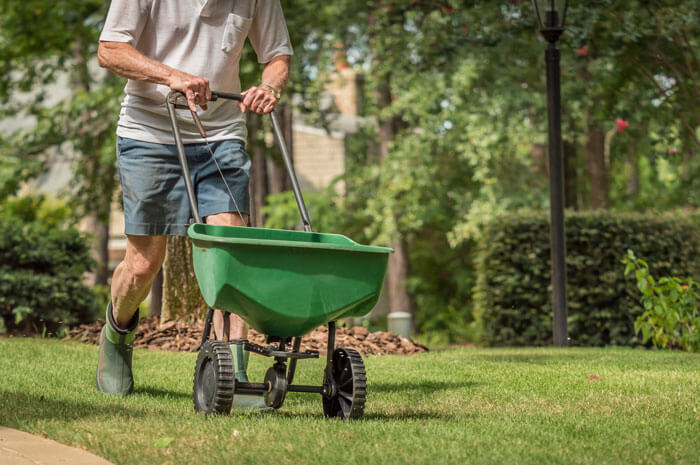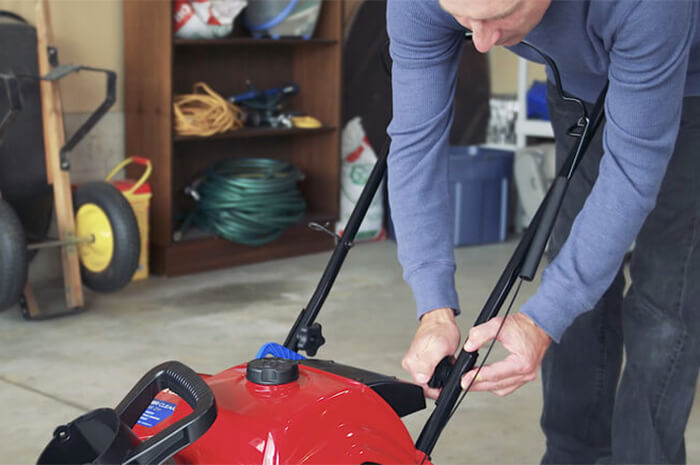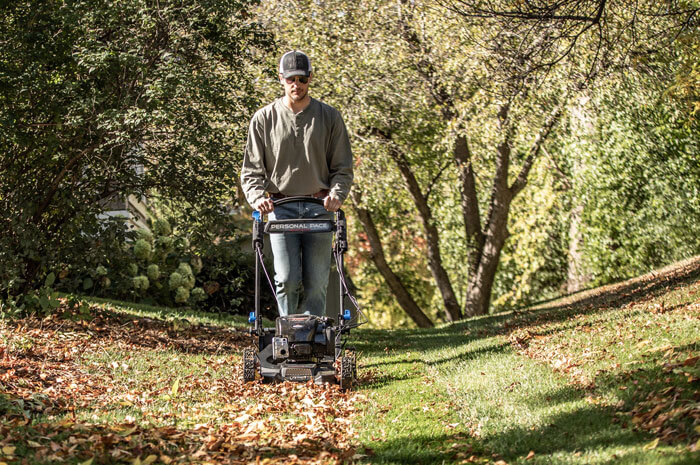
What is lawn fertilizer? Why is it important? Is it important? Ask homeowners these three questions and you could end up with a thousand different answers and very little consensus. And while the short answers are easy — nutrients, plant health and growth — it’s worth taking the time to learn the basics of lawn fertilizers and how to best apply them.
What Is Grass Fertilizer and What Does it Do?
Essentially, a fertilizer is a mixed substance that contains the chemical elements that support grass growth and productivity. Homeowners use lawn-specific fertilizers to replenish their soil with the nutrients — nitrogen, phosphorus, and potassium — that your grass needs to grow and repair regular damage caused by things like foot traffic and mowing.
A soil test is necessary to help you determine which nutrients your soil needs, if any. It is important that only the required nutrients be applied. Excessive amounts of phosphorus can end up in surface water and potentially lead to eutrophication.
Nitrogen (N)
Nitrogen is the mineral nutrient your lawn requires in the greatest quantity. Not only is nitrogen responsible for enhancing the grass’s deep green color, it is also an essential component for the proteins and enzymes that provide for sturdy growth and the shoot density needed to out-compete weeds and withstand and recover from diseases, insects, and traffic.
Phosphorus (P) and Potassium (K)
In addition to nitrogen, your lawn may also need phosphorus and potassium. Phosphorus, which tends to remain in the soil, is necessary to aid root growth and improve establishment rates, especially when seeding your lawn. Potassium, which can be prone to leaching into the soil, enhances grass resistance to cold, disease, drought, and wear.
Be aware of your state laws and local ordinances. Some places have banned the application of phosphorus to turf unless soil tests show it is needed, while other places have seasonal restrictions of any fertilizer applications.
How to Read a Fertilizer Bag
The numbers on a bag of fertilizer tell you what percentage of N-P-K is contained in the bag. For example, a bag of 20-10-10 is 20% N, 10% P, and 10% K. The remainder may consist of additional elements such as iron and sulfur as well as inert filler ingredients. If you live where there are restrictions on phosphorus applications, choose a fertilizer with zero phosphorus such as a 19-0-7 or a 24-0-11.
What Kind of Lawn Fertilizer Should I Use?
Fertilizers can be natural, synthetic, or a mix of the two and can be either fast or slow releasing. Faster releasing fertilizers have an increased likelihood of burning your grass, especially in dry conditions. For this reason, slow releasing fertilizers, applied correctly, are recommended for most lawns.
What’s the Difference? Fast-Release vs. Slow-Release Lawn Fertilizer
Fast-Release Lawn Fertilizer:
Ammonium nitrate, ammonium sulfate, and urea are examples of quick-release forms of nitrogen. They provide rapid greening of the grass but also have drawbacks, such as leaching, nitrogen burn, increased soil salinity, and requiring more applications to maintain nutrient levels.
If you decide to use only fast-release fertilizer, it is recommended that you use no more than one pound per 1,000 square feet of lawn.
Slow-Release Lawn Fertilizer:
Slow-release fertilizers reduce the amount of time you spend behind your spreader, last longer, and may save you time and money, despite a higher initial cost. As the term implies, grass fertilized with slow-release nitrogen will take longer to respond. However, there is a reduced risk of burning or leaving the site through runoff and leaching.
Slow-release lawn fertilizers include either slowly soluble or water-insoluble nitrogen. The slowly soluble products are synthetic organic fertilizers manufactured in a way that gradually releases the nitrogen over time by manipulating the size of particles and sometimes coating them. These slowly available forms include IBDU, methylene ureas, sulfur-coated ureas, and poly-coated ureas. The water-insoluble sources include both synthetic organics, like urea formaldehydes, and natural organic materials, such as activated sewage sludge, processed manures, and plant-based meals.
How & When to Apply Lawn Fertilizer
At minimum, apply two pounds of lawn fertilizer annually. Grass type, lawn size, and maintenance requirements for your yard all play a factor in the exact amount of fertilizer to use and when to apply it. Learn these factors and follow the instructions on the bag, being aware that your application instructions are usually in pounds of nitrogen per 1,000 square feet of lawn — and use a spreader for even coverage.
Northern grasses
In broad terms, low-maintenance northern lawns need two pounds of nitrogen per 1,000 square feet, while higher-maintenance lawns will need between three and four pounds.
Divide your annual fertilizer applications into a two-thirds portion in early fall and the remainder in late spring after the first green-up.
Southern grasses
Low-maintenance southern yards require between two and four pounds of nitrogen per 1,000 square feet, while higher-maintenance yards need between four and six pounds.
The first application of the year should be made a few weeks after the initial spring green-up, with a smaller second round of fertilizer later in the summer while your grass is still growing.
Last Notes on Lawn Fertilizer Basics
Make sure to follow the manufacturer’s instructions. Check the calibration of your spreader, as well as the square footage of your lawn, to ensure that you are applying the right amount of fertilizer. Remember, more is not necessarily better with fertilizers. Applying too much may burn your lawn and promote thatch formation, disease and insect infestation.
Keep in mind that over-watered lawns, those subject to heavy rainfall, and sandy soils are more prone to leached nutrients. The use of slow-release and water-insoluble fertilizers will help reduce leaching and keep nutrients available to the grass longer.
When mowing your grass, mulch the clippings back into your lawn. Grass clippings left on the lawn over the course of a year will return about 1 pound of nitrogen per 1,000 square feet.
Every lawn is unique! If you need local insight to your grass type or climate challenges, consult your local Cooperative Extension Service (CSREES).



